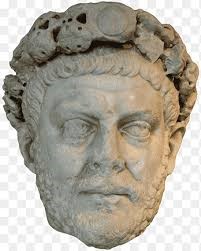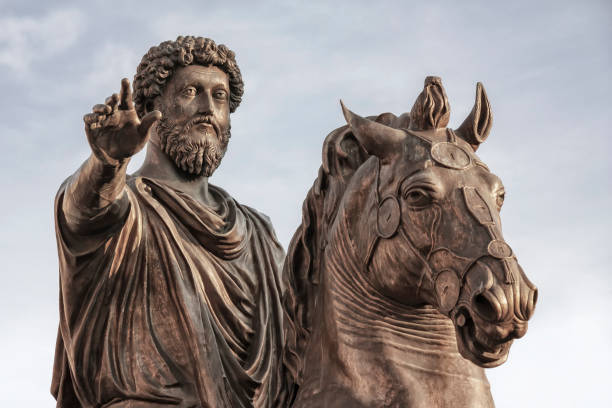From Cleopatra to Roman Rule: Egypt’s Transformation

Egypt: A Roman Province (30 BC – 642 AD)
With Cleopatra VII’s demise by suicide in 30 BC, Egypt fell under Roman dominion, transforming into a Roman province. In recognition of this significant victory, the Romans honored Octavius with the title of Augustus, a name that continues to be associated with the eighth month of our modern calendar. Recognizing Egypt’s vital role as the world’s primary agricultural supplier, the Romans commemorated their conquest by striking a special coin. This coin featured the crocodile deity “Sobek”, revered by the Egyptians as the patron god of the Fayoum, (Egypt’s most fertile agricultural region).
A commemorative coin
A commemorative coin with a picture of Emperor Augustus on one side and the other side a picture of the crocodile Sobek
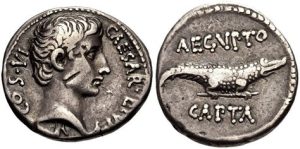
Prince Germanicus’ Visit to Egypt in 19 AD
Important Works of Roman Emperors in Egypt Emperor Titus’ Visit (79-96 AD)
After becoming Emperor of Rome following a period of unrest during his father’s reign, Titus visited Egypt. During his visit, he attended a ceremony to choose the Apis bull (the Egyptian representation of the god Serapis) in Memphis. To show respect for Egyptian believes, he wore official Roman clothing and a pharaoh’s crown. He also built temples in Ptolemais town (modern-day almensha town in sohag governorate).
Emperor Domitian
who succeeded Titus, continued the tradition of building Egyptian temples, particularly the Temple of Isis at Philae.
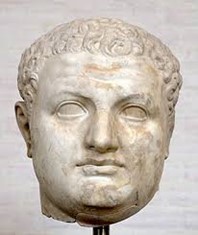
Bust of Emperor Domitian
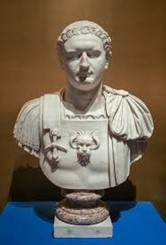
Statues of Memnon
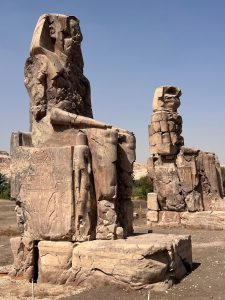
Peasant Revolt During the Reign of Emperor Marcus Aurelius (173 AD)
As previously mentioned, Egypt became a Roman province. As a result, numerous revolts occurred due to the oppression felt by the Egyptian peasants, who were burdened with excessive taxes. During the reign of Emperor Marcus Aurelius in 173 AD, the peasants of the Nile Delta staged a revolt led by a priest named Isidore. Emperor Marcus Aurelius was successful in suppressing this uprising.

Emperor Commodus (176-192 AD)
Although Aurelius suppressed the rebellion, its roots remained and continued to cause problems during the reign of his successor, Commodus. The rebellion even affected the supply of food to Rome, forcing Emperor Commodus to put many of the rebellion’s leaders on trial and execute them. To ensure a steady food supply to Rome, Commodus established a new commercial fleet to transport wheat from North Africa in case the Egyptian wheat supply was delayed. -Emperor Commodus
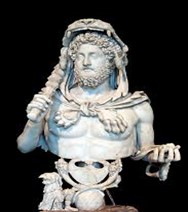
Emperor Septimius Severus’ Visit to Egypt (199-200 AD)
Emperor Septimius Severus visited Egypt and embarked on a journey to explore the Egyptian antiquities along the Nile Valley. However, this was not merely a leisurely trip. The visit was motivated by the need to address the deteriorating situation in Egypt, as the existing administrative system had proven incapable of resolving economic problems. During his visit, Severus introduced a new administrative system, the first of its kind since the system established by Augustus in the 1st century AD. He created a council in each city, a move that had been rejected by all previous emperors. -Emperor Septimius Severus

Queen Zenobia
Due to severe internal conflicts within the Roman Empire, many Roman military garrisons were withdrawn from Egypt. This left Egypt vulnerable to invasion, and an ambitious queen named Zenobia, ruler of Palmyra (modern-day Syria), took advantage of the situation. She invaded Egypt in 269 AD and ruled it for three years. However, the Roman general Probus eventually defeated Zenobia and restored Egypt to Roman rule. Zenobia was captured and taken to Rome as a prisoner. This was a fate that Cleopatra had feared, and Zenobia suffered the same humiliation of being paraded through the streets of Rome in chains as a trophy of war.
Emperor Diocletian (284 AD)
During his reign, the Roman Empire was divided into two parts: the Eastern part, ruled by Diocletian himself with its capital in Byzantium, and the Western part, ruled by Maximian with its capital in Rome. In Egypt, the Roman commander Domitius attempted to declare independence in Alexandria and proclaim himself emperor. Diocletian himself came to suppress this rebellion. He besieged Alexandria for eight months until he finally captured it and crushed the rebellion. Due to the numerous massacres that occurred during this time, Diocletian’s reign became known as the “Age of Martyrs” in Egypt.
